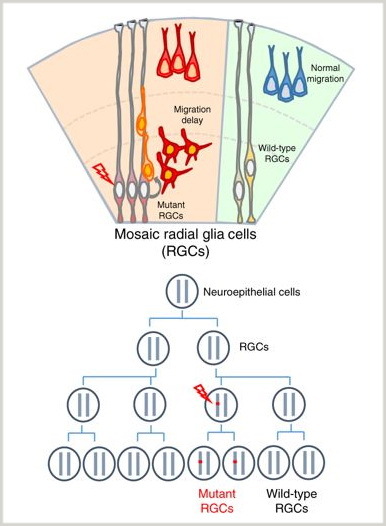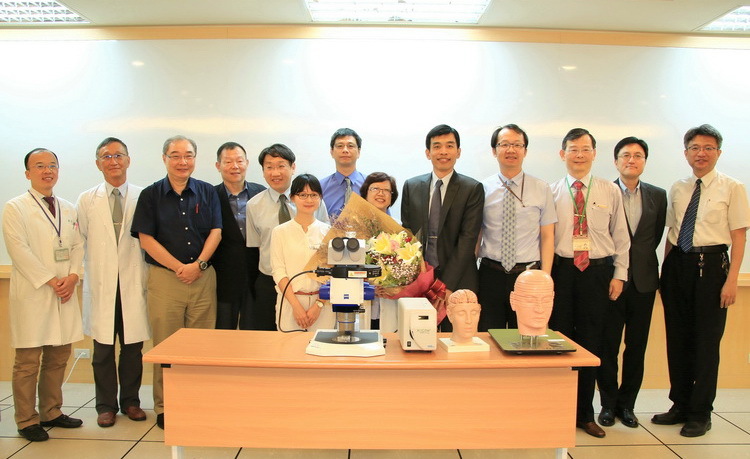Transposon-Based Screen for Key Genes in Brain Development
Our team has developed a new genetic selection procedure that
uses a transposon-based system to target genes involved in
brain development. This method has helped to discover successfully
more than 30 genes that may be associated with brain development
disorders. This breakthrough result was published in prestigious
journal Nature Communications in 2018.
Many
neonatal brain developmental diseases, such as microcephaly,
lissencephaly, and mental retardation, have been identified
as having a genetic component. The genetic mutations that
can cause abnormal brain development are still a question
that scientists are looking to answer. However, due to the
large size of the human genome and the high level of genetic
variation found in humans, identifying naturally occurring
mutations that cause abnormal brain development in humans
is difficult. Furthermore, analyzing each individual gene
and its correlation to a disease is very often an almost impossible
task.

We utilized transposons to induce gene mutations
and this led to the discovery of more than 30 key genes that
appear to be involved in brain developmental disorders.
In
order to search for such genetic mutations, our team approached
the problem from a different angle. We came up with a novel
idea of inducing genetic mutations in neural progenitors and
observing the relationship between each mutation and possible
effects on their development in the brain. His team injected
a gene with the ability to transpose in mammals into mouse
brain neural stem cells with the aim of inducing mutations.
This method allowed usto identify the specific genetic mutations
that affected the growth, differentiation, transfer, and connectivity
of neural cells during the developmental phase of the mouse
brain. Applying this new selection process, our team was able
to identify 33 genes that seem to have a role in brain development.
Due
to the fact that majority of genes that are present in humans
are also present in the mouse, the brain maturation processes
of these two species are also very similar. Thus we began
working closely with Dr. Shang-Yeong Kwan of Taipei Veterans
General Hospital, Department of Neurology's Neurological Institute
and Professor Chi-Hung Lin and his team from the VYM Genome
Research Center with the aim of comparing the identified genes
in mice and those present in infant epilepsy patents. Together
we discovered that many of the newly identified mutations
showed a close correlation between mice and humans. This means
that this novel transposons selection process in mouse is
able to rapidly pinpoint the genetic cause of abnormal brain
maturation in humans. Simultaneously, this method has also
resulted in the discovery of a number of new genes that have
yet to be fully investigated. This research will help future
scientists to explore the relationship between genetics and
abnormal brain maturation.

We
stated that the idea of utilizing transposons to induce mutation
emerged because natural genetic mutations occur rarely in
nature and therefore finding such a mutated gene in humans
is very time consuming. Nevertheless, many species, such as
maize and insects, and even human beings, have transposons
in their genomes, which inspired us to use these as a tool
to facilitate mutation in a mouse system. Moreover, many animals
share a large number of common genes with human beings, and
therefore applying an animal model not only overcomes difficulties
associated with using humans being as an experimental system,
but also allows the use of the mouse model to discover how
these genes affect brain development and the cellularmechanisms
involved.
Our
team have come up with this new method that breaks some of
the barriers associated with a traditional genetics study
that targets either mice or humans. We were able to pinpoint
genes related to brain development without individually examining
the more than 20,000 genes needed in a human study. This is
a huge contribution to basic biological science and has vast
further applications in the medical field. Identifying genes
related to brain development will also enable the development
of early screening methods, which in turn should lead new
treatment methods for humans.
This
research originated totally in Taiwan, starting from the initial
brainstorming, which led to obtaining the necessary funding
and then the execution of the research. It also involved interdisciplinary
cooperation between National Yang Ming University and Taipei
General Veterans Hospital. The research received funding from
the Ministry of Science Technology ¡§Excellent
Young Investigator Grant,¡¨ from the National Health
Research Institutes ¡§Career Development Grant¡¨
program and the Ministry of Education's ¡§The Aim
for the Top University Project¡¨ fund. Finally,
the important fruitful results were published in Nature
Communications, one of the world's-leading journals
and were also reported by GeneOnline.

- Lu
IL, Chen C, Tung CY, Chen HH, Pan JP, Chang CH, Cheng JS,
Chen YA, Wang CH, Huang CW, Kang YN, Chang HY, Li LL, Chang
KP, Shih YH, Lin CH, Kwan SY, Tsai JW* (2018) Identification
of genes associated with cortical malformation using a transposon-mediated
somatic mutagenesis screen in mice. Nat Commun,
9(1):2498.
Last
updated 6/13/2013. Copyright© 2013
Jin-Wu Tsai. All rights reserved.
|
